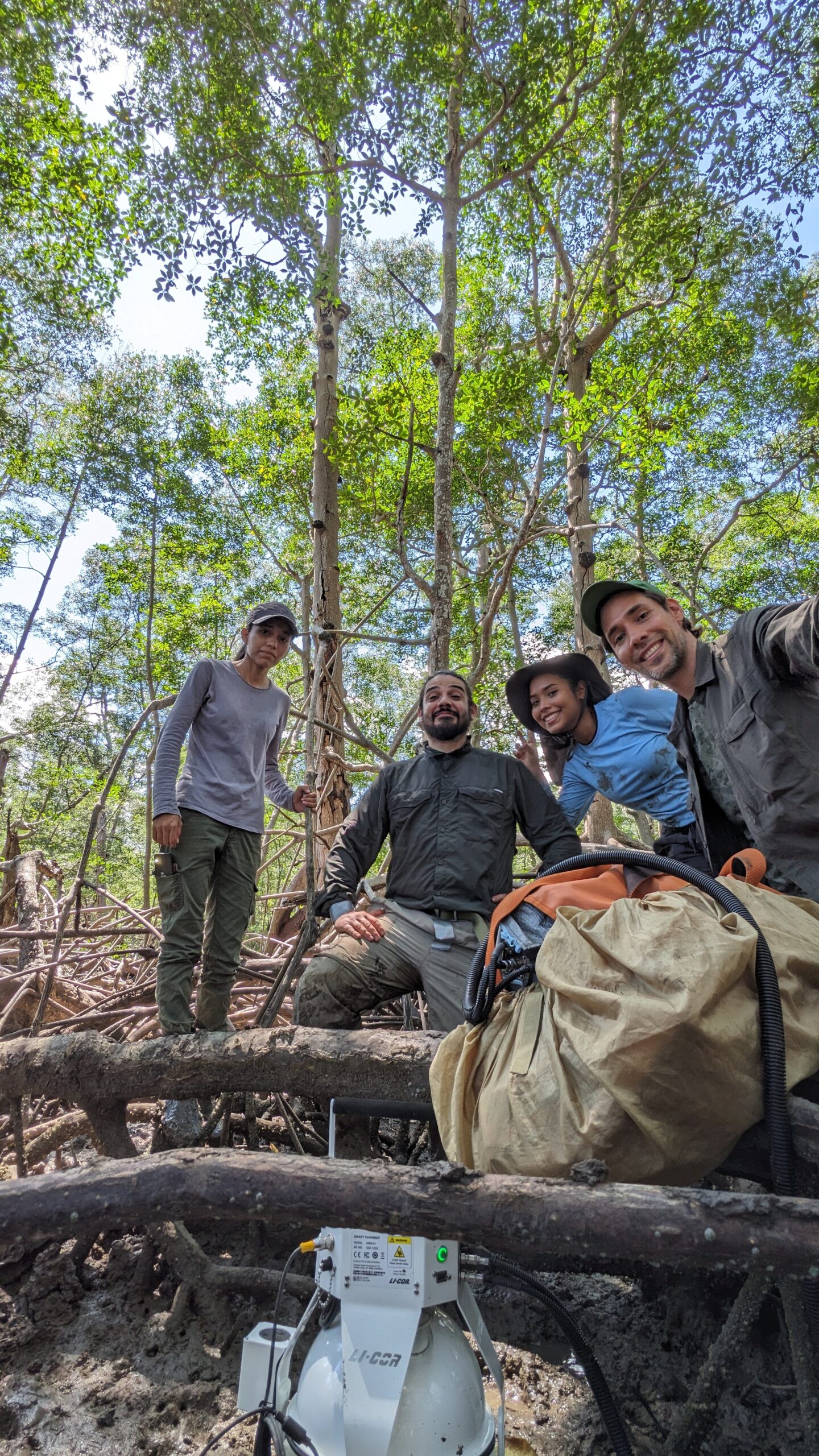Trans-isthmic carbon dynamics
methane and carbon dioxide emissions from soil and trees in mangrove ecosystems of Panamá
Written By Jorge Hoyos-Santillan (PhD)
Research Associate, Smithsonian Tropical Research Institute, Panamá
Associate Researcher, University of Magallanes, Chile
Associate Professor, University of Nottingham, UK
Blue Carbon Specialist, Audubon Americas, US
As many countries strive to reduce their carbon emissions, Nature-based Solutions (NbS) have emerged as one of the most promising alternatives. However, accurately assessing the overall contribution of different ecosystems to carbon mitigation requires understanding their capacity for carbon sequestration and emission. Given Panama’s decision to prioritize mangroves in its climate strategy, it is crucial for the country to not only estimate the baseline levels of aboveground and belowground carbon in mangroves but also to conduct research aimed at quantifying the net contribution of mangroves to greenhouse gas emissions, including CO2 and CH4. Additionally, when estimating greenhouse gas emissions, it is important to consider various factors that influence carbon dynamics, such as nutrient inputs, organic matter content in soil, and the physiological characteristics of different mangrove species.
To enhance the carbon balance in Panamanian mangroves within the framework of the Blue Natural Heritage project, we are currently carrying out a series of in situ and ex situ experiments. These experiments involve measuring greenhouse gas emissions from soil and trees in both Pacific and Caribbean mangroves, as well as cultivating mangrove seedlings under controlled conditions. Our experimental approach is a collaborative effort involving researchers from the Environmental Biogeochemistry Laboratory (UMAG, Chile), the Smithsonian Tropical Research Institute (Panama), the Center for Climate and Resilience Research (CR2, Chile), the Universidad de la Frontera (Chile), and McGill University (Canada). These experiments are being conducted in collaboration with undergraduate and postgraduate students from Panama, with the aim of building national research capacities.
Preliminary findings from our research indicate substantial variation in greenhouse gas emissions among different mangrove species, with pronounced spatial and temporal dynamics. Yuheimy Castillo 1,4, Diana Castillo 1,4, Eric Manzané 2,7, Jorge Morales 3, Brian Leung 3, Alejandro Miranda 4,5,6, and Jorge Hoyos-Santillan 4,5,7,8 are currently conducting the experiments and analyses. By combining our results with our parallel investigations on the spatial distribution of mangrove species, we will significantly contribute to advancing our understanding of the carbon balance and net contribution of Panama’s mangroves as a climate strategy.
This work is funded by ANID Fondecyt Iniciación 1120024, ANID Fondecyt Postdoctoral Grant 3210101, and the BID-UK Blue Carbon Fund PN-T1233, which is executed by the National Audubon Society in collaboration with the Ministry of the Environment of Panama.

© Audubon Americas
1-Universidad de Panamá (Panamá)
2-Universidad Tecnológica de Panamá (Panamá)
3-McGill University (Canada)
4-Environmental Biogeochemistry Lab, University of Magallanes (Chile)
5-Centre for Climate and Resilience Research (CR2) (Chile)
6-Departamento de Ciencias Forestales, Universidad del Frontera (Chile)
7-Audubon Americas (USA)
8-Smithsonian Tropical Research Institute (Panamá)